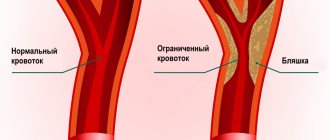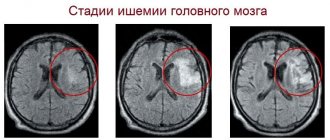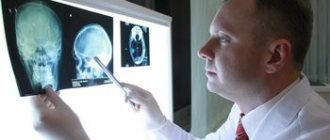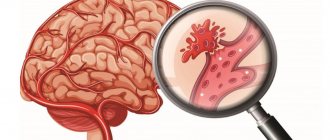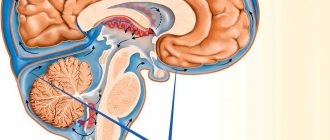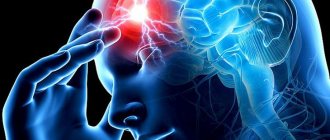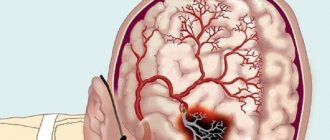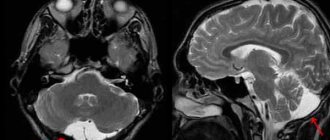May 11, 2021 at 05:21 pm MRI of the head in Tushino 4311
Cerebral atherosclerosis is a disease that occurs due to the formation of atherosclerotic plaques inside the blood vessels of the brain. As a rule, atherosclerosis is a precursor to stroke. At the initial stages of the disease, the patient does not feel the disease. This is the insidiousness of the disease. If the lumen of the arteries decreases, dizziness may occur, as well as noise in the head and ears. The formation of plaques occurs in several stages (stage of fatty spots, liposclerosis, atherocalcinosis).
Symptoms of cerebral atherosclerosis
The danger of atherosclerosis lies in the fact that at first this disease practically does not manifest itself.
There are no characteristic symptoms that would suggest the development of stenosis. For a long time, the patient can carry out his usual activities, play sports, work and not be aware of the risks of a stroke. As a rule, it happens suddenly: during physical activity, stress, or even for no apparent reason. Despite this, there are still symptoms that may indicate the development of atherosclerosis, requiring special monitoring by doctors. And this:
- noise in ears;
- recurrent headaches;
- feeling of heaviness in the head;
- muscle weakness;
- decreased physical potential;
- feeling of weakness;
- feeling of numbness in the face and neck;
- dizziness;
- loss or decrease in vision;
- speech disorder;
- emotional instability.
- tachycardia;
- tremor in the limbs and face;
- sleep problems.
Causes of cerebral atherosclerosis
There is no single prevailing cause for the development of atherosclerosis. In patients, the disease appears and progresses due to various factors.
It is necessary to highlight the main provocateurs of atherosclerosis; This:
- smoking;
- hypertension;
- diabetes;
- hormonal imbalances;
- metabolic disorder;
- excessive psycho-emotional stress, stress, anxiety;
- physical inactivity;
- overweight;
- infections;
- autoimmune diseases;
- poor nutrition.
A key factor in the development of atherosclerosis is a disorder of lipid metabolism. The imbalance causes damage to the vascular walls, resulting in plaque formation.
Classification of the disease
The formation of atherosclerotic plaques can occur in individual vessels or affect most of them. Depending on the organ in which blood flow is reduced and the affected artery, the following forms of the disease are distinguished:
- Heart shape. Ischemic atherosclerosis with damage to coronary vessels and valves.
- Kidney form. The renal arteries are affected.
- Brain (cerebral) form. The disease spreads to intracranial vessels.
- Intestinal form. The mesenteric arteries are affected.
- Atherosclerosis of the aorta. Its abdominal region is most often affected.
- Atherosclerosis of the arteries of the lower extremities, mainly femoral.
- Atherosclerosis of brachiocephalic vessels. These include the right carotid, vertebral and subclavian arteries.
Diagnosis of cerebral atherosclerosis at the Mother and Child clinic
At the Mother and Child clinic, the diagnosis of atherosclerosis is carried out using highly informative methods. We focus on advanced examination methods, thanks to which lesions of the vessel walls are detected even in the early stages.
First of all, the patient visits a therapist, neurologist or vascular surgeon. The doctor conducts a visual examination, conducts a conversation and clarifies the complaints. After collecting primary diagnostic information, an examination plan is drawn up. Both laboratory and instrumental diagnostics are carried out. If necessary, the doctor refers the patient to another specialist and observes the patient together with him.
Diagnostics: how to determine cerebral atherosclerosis
To make a diagnosis of cerebral atherosclerosis, laboratory and instrumental examination methods are used. The first is aimed at determining the level of dyslipidemia and subsequent monitoring of the success of drug therapy. Hardware methods are used to search for plaques and localize stenosis, which is important for deciding on surgical treatment.
Laboratory diagnosis of cerebral atherosclerosis
When determining pathology, doctors evaluate the following indicators (the range of norms is indicated in parentheses):
- triglycerides (0.41-1.8 mmol/l);
- cholesterol (3.2 – 5.6 mmol/l);
- HDL-cholesterol (HDL): male. (0.7 – 1.73 mmol/l) female (0.86 – 2.28 mmol/l)
- LDL cholesterol (LDL): male. (2.25 – 4.82 mmol/l), women. (1.92 – 4.51 mmol/l)
- Apolyprotein A1: male (1.05 – 1.75 mmol/l), women. (1.05 – 2.05 mmol/l)
- Apoliprotein B: male (0.66 – 1.33 g/l) female (0.6 – 1.17 g/l)
- Atherogenic coefficient (2.2 – 3.5)
Instrumental examinations
The high mortality rate and frequent disability of patients with cerebrovascular accidents stimulates medical science to constantly improve equipment. Let's talk about the modern approach to determining cerebral atherosclerosis.
Dopplerography of head vessels
This examination refers to ultrasound techniques. It will show the speed and symmetry of blood flow in the main arteries of the brain. This is not the most accurate diagnostic method, but it is quite simple, fast and safe. An error can be caused by a simple displacement of the sensor, so two reports from different doctors on the same day can present different data, which will undermine a person’s adherence to treatment.
CT angiography of cerebral vessels
This method is much more informative than the previous one. But, unfortunately, it is more expensive and has risks: it uses x-rays, which involves some exposure to radiation, and the contrast used can cause an allergic reaction. Also, you will not be given this examination until you bring a blood test for creatinine clearance. The risk of “side effects” is not great: the dose of radiation exposure is minimal and cannot cause negative consequences once, and allergic reactions are extremely rare and can be successfully controlled with medications.
What examination should I undergo to reliably determine the problem? The choice is up to the doctor who assessed your clinical picture. Routine use of CT angiography is often not justified. If a person has no neurological complaints and is within the normal range during tests, then there will be no need for a CT scan. But if it is necessary to determine the lesion against the background of vivid symptoms, this examination becomes the diagnostic standard.
MRI angiography of cerebral vessels
The method is based on the influence of a magnetic field. The technique involves the use of contrast, but the negative impact of x-rays is no longer present. Claustrophobia can be a problem - the patient needs to lie without moving in a closed space for 20 minutes. An obstacle to performing an MRI will be the presence of metal prostheses, plates and electronics. The indications for the examination are the same as for CT angiography.
Doctor's advice: preventive check-up
Let's imagine a middle-aged person (up to 45 years old) without risk factors (they were discussed above). According to standards, it does not require special examination in the absence of symptoms. If unfavorable circumstances arise/identify, doctors will advise him to take a lipid profile once every two years. A confirmed diagnosis of cerebral atherosclerosis requires determination of blood fats every 3 months.
Examination methods
To establish a diagnosis and clarify the degree of progression of atherosclerosis, the following are usually prescribed:
- clinical blood test (to assess the patient’s general health);
- ultrasound examination (vascular Dopplerography): to assess the condition of the vascular system, identify plaques, blockages, clarify their location, etc.;
- MRI of the brain: to assess processes occurring in the brain and obtain detailed information;
- urine and blood tests to determine cholesterol;
- blood test to determine lipid balance;
- X-ray with contrast: to identify lesions and assess the functioning of the lymphatic and vascular systems.
1.General information
Atherosclerosis, arteriosclerosis, simply sclerosis and “damned sclerosis” are not the same thing, they are four different diagnoses. We jokingly and colloquially pose the last one to ourselves when we forget something or cannot remember; It most often has nothing to do with the actual state of health. In medicine, “sclerosis” is understood, in a broad sense, as thickening due to pathological, for one reason or another, proliferation of rigid and functionally useless connective tissue (synonym – fibrosis); in relation to hollow organs and especially vessels, sclerosis means thickening of the walls and, accordingly, narrowing of the lumen up to complete occlusion (obturation).
Arteriosclerosis (calcinosis) is calcification of vascular walls with calcium salts according to approximately the same scenario and with the same result.
Finally, the term “atherosclerosis,” which can be literally translated from Greek as “mush compaction,” means a sclerotic process caused by the deposition of one of the natural fatty alcohols, cholesterol (in some languages it is also called cholesterol) on the inner surface of blood vessels. Under and around such a cluster, the above-mentioned processes of fibrosis and calcification develop, as a result of which the lumen of the vessel and its throughput capacity progressively (at one rate or another) decrease.
Probably everyone has heard about atherosclerosis and cholesterol plaques in blood vessels. Many people try to adhere to cholesterol-free diets, and this certainly makes sense: in different parts of the world, a statistical connection between the frequency of atherosclerosis and the dominant “menu” in the region has long been confirmed. A direct consequence of vascular atherosclerosis is ischemia, i.e. insufficient blood supply to tissue and/or organ; The most famous and widespread (or rather, leading in statistics) example is coronary heart disease.
Atherosclerosis of cerebral vessels (cerebrosclerosis) is called the most common disease of the central nervous system. Most likely, this is the case, however, a direct correlation with age should be emphasized: the deficiency of cerebral vasculature (blood supply) caused by atherosclerosis is considered a chronic progressive endocrine-metabolic disorder, which must “have time” to form (and is usually formed in adulthood and old age) under the influence of a number of reasons and factors.
A must read! Help with treatment and hospitalization!
Treatment of cerebral atherosclerosis at the Mother and Child clinic
Doctors at the Mother and Child clinic provide comprehensive treatment of atherosclerosis: medicinal and non-medicinal.
Drugs are prescribed to correct lipid metabolism, reduce blood pressure, cholesterol levels, eliminate vitamin deficiency, and strengthen the walls of blood vessels. Pharmaceuticals have reached a new level, and innovative products demonstrate high effectiveness in the treatment of atherosclerosis. To reduce threats, additional therapy is carried out for current chronic diseases: diabetes, hypertension, hormonal imbalance, etc.
Non-drug treatment consists of adjusting lifestyle and nutrition. The doctor prescribes recommendations on an individual basis, taking into account the patient’s age, professional activity, and interests. This includes proper nutrition, a healthy lifestyle, vitamin complexes, restorative and spa activities can be recommended.
If conservative treatment is unable to reduce the risk of stroke and achieve the desired effect, surgery may be considered. Stenting allows you to restore the lumen of the vessel. Stent installation is a minimally invasive operation, after which the patient’s quality of life improves and the risk of developing tissue ischemia is neutralized.
Medication
The following groups of medications are used:
- statins - to reduce cholesterol;
- fibrates - to reduce triglyceride levels;
- antiplatelet agents - help thin the blood and reduce the likelihood of blood clots;
- complex of general strengthening vitamins;
- Cholestides - prevent fatty acids from being absorbed into the blood;
- medications to lower blood pressure;
- other drugs that relieve individual symptoms of the disease.
Prevention of cerebral atherosclerosis and medical recommendations
Successful treatment should be complemented by a well-thought-out scheme for the prevention of atherosclerosis. The disease can recur, so the patient needs to reconsider his lifestyle and attitude towards his health.
Basic recommendations:
- giving up bad habits: first of all, alcohol and smoking;
- moderate physical activity (hiking, swimming, etc.);
- avoidance of experiences and stressful situations (external stimuli should be neutralized);
- diet: you must avoid fatty, smoked, salty foods, fast food, marinades, sweets, carbonated drinks and other unhealthy foods;
- normalization of sleep and wakefulness.
If there is a predisposition to the development of atherosclerosis, it is necessary to visit a doctor 1-2 times a year and undergo an examination. The consequences of a stroke are dangerous, and it is in your best interest to take measures to prevent cerebrovascular disease.
Sign up at the Mother and Child clinic for a consultation with a phlebologist or neurologist - experienced specialists will conduct a comprehensive examination and treatment of atherosclerosis, offering the best methods for correcting dangerous vascular lesions.
Treatment
Treatment depends on the stage of the process. This may be a conservative approach or surgery. In the first case, the focus is on normalizing the patient's lifestyle. Nutrition is adjusted, a special diet is prescribed, and a weight loss program is developed, if necessary. As drug therapy, drugs are used that normalize blood pressure, lower cholesterol levels, normalize blood counts, and replenish the supply of vitamins and microelements.
If the process has gone far enough and medications do not achieve the desired result, surgery is used. This can be open or modern endovascular intervention. A gentle method is angioplasty, during which the lumen of the vessel expands; if necessary, a stent can be installed to maintain the lumen of the vessel in the desired position. The operation is aimed at removing plaques that are blocking normal blood flow. In some cases, a severely damaged vessel may be replaced or a new blood flow path created.
Get diagnosed with atherosclerosis at Clinic No. 1
- Neurologist appointment
- Doppler ultrasound
- Coronary angiography
For one-time payment for services - 20% discount
Call
